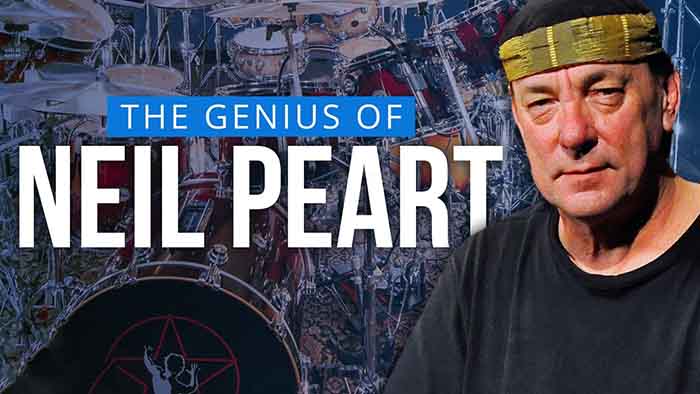The Genius Of Neil Peart (video)
Αναρωτιέμαι τι μπορεί να ειπωθεί για την (σπουδαία) προσωπικότητα του Neil Peart που να μην είναι ήδη γνωστό. Μουσικός (drummer) στους (θεούς) Rush, στιχουργός, λογοτέχνης. Πολυδιάστατη καλλιτεχνική προσωπικότητα, ένα πραγματικός θρύλος του ευρύτερου φάσματος της "σκληρής" μουσικής, ο οποίος γεννήθηκε το φθινόπωρο του μακρινού 1952 και απεβίωσε προ τριετίας (7 Ιανουαρίου 2020). Το YouTube κανάλι "Drumeo" πραγματοποιεί βίντεο - αφιέρωμα στον Καναδό μουσικό. Στην περιγραφή του βίντεο αναφέρεται σχετικά:
«Known lovingly as ‘The Professor’, Peart was an innovator on the kit, a prolific writer and lyricist, and an absolute legend. But why is he considered one of the greatest drummers of all time?
Here’s some Peart education:
► 0:01 Intro
► 0:49 The Inventor
During his 40-year career with Rush, Peart developed signature riffs that are recognizable even in the playing of the drummers he influenced.
One of the most obvious examples is the ride cymbal groove that can be heard in songs like “The Spirit of Radio”, “YYZ”, “La Villa Strangiato”, “Subdivisions”, and more. Peart described it as something he’d use at medium tempos to bring forward motion to the music. He actually created the pattern by accident when trying to learn something completely different!
We can’t mention Peart’s signature riffs without talking about his massive drum fills. Cascading down his entire kit in songs like “2112” and “Lakeside Park” – not just because he could, but because it totally worked in the context of the tune – set him apart from other drummers of the time.
► 2:31 The Designer
There was always a purpose for every drum part, and that was to support the music. Peart was adept at building tension in one section and releasing it in the next. Listen to what he plays through Alex Lifeson’s guitar solo in “Tom Sawyer” or during the choruses in “Limelight” (that shift between a relaxed 3/4 groove and a driving 4/4 groove is a work of art!).
► 4:56 The Virtuoso
In the ’70s, Peart was already pushing boundaries with technically proficient drumming, like his intricate parts on “La Villa Strangiato” and “2112”. His independence on “Bravado” was next level, and his double bass playing on tracks like “Anthem” and “One Little Victory” was incredible.
► 7:15 The Explorer
Peart wasn’t just interested in the traditional drum kit. He loved experimenting with sounds as a whole, whether it was percussion or electronics. In Rush, he went beyond simply playing rock by incorporating other styles into the music (especially in songs like “Xanadu”, “Closer To The Heart” and “The Trees”).
He embraced modern technology as it entered into the music space, which meant using Simmons pads, a MalletKAT MIDI controller, Roland pads and more. In “Mystic Rhythms” he used a Simmons electronic tom and triggered sounds with a pedal. Most rock drummers don’t push sonic boundaries like Peart did.
► 9:22 The Mathematician
If you aren’t convinced of Peart’s genius yet, imagine combining all of the above points with challenging time signatures. “By-Tor And The Snowdog”, “Cygnus X-1 Book I” and “Book II”, “Xanadu”, “La Villa Strangiato”, “YYZ“…the list goes on and on and could wrap around the globe twice.
► 11:14 Final thoughts
Even though his nickname ‘The Professor’ came from a Gilligan’s Island character, Neil Peart has taught drummers so much over the years. He was also a constant student and his legacy will live on even longer in his work.
What have you learned from Neil Peart?»









Δεν υπάρχουν σχόλια